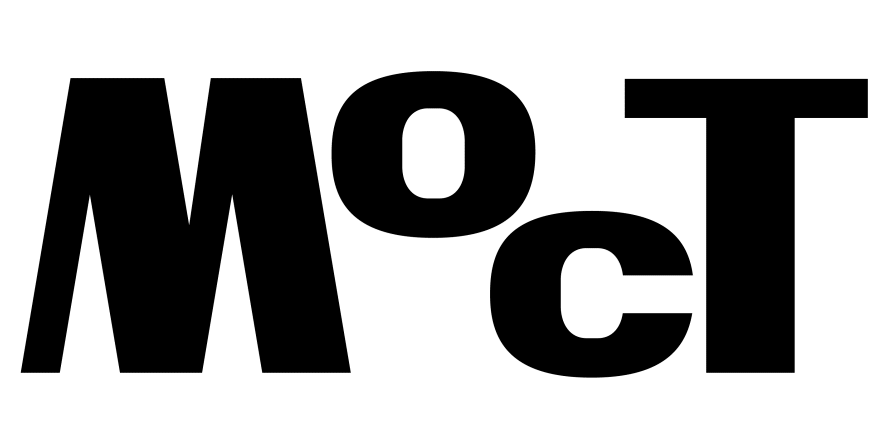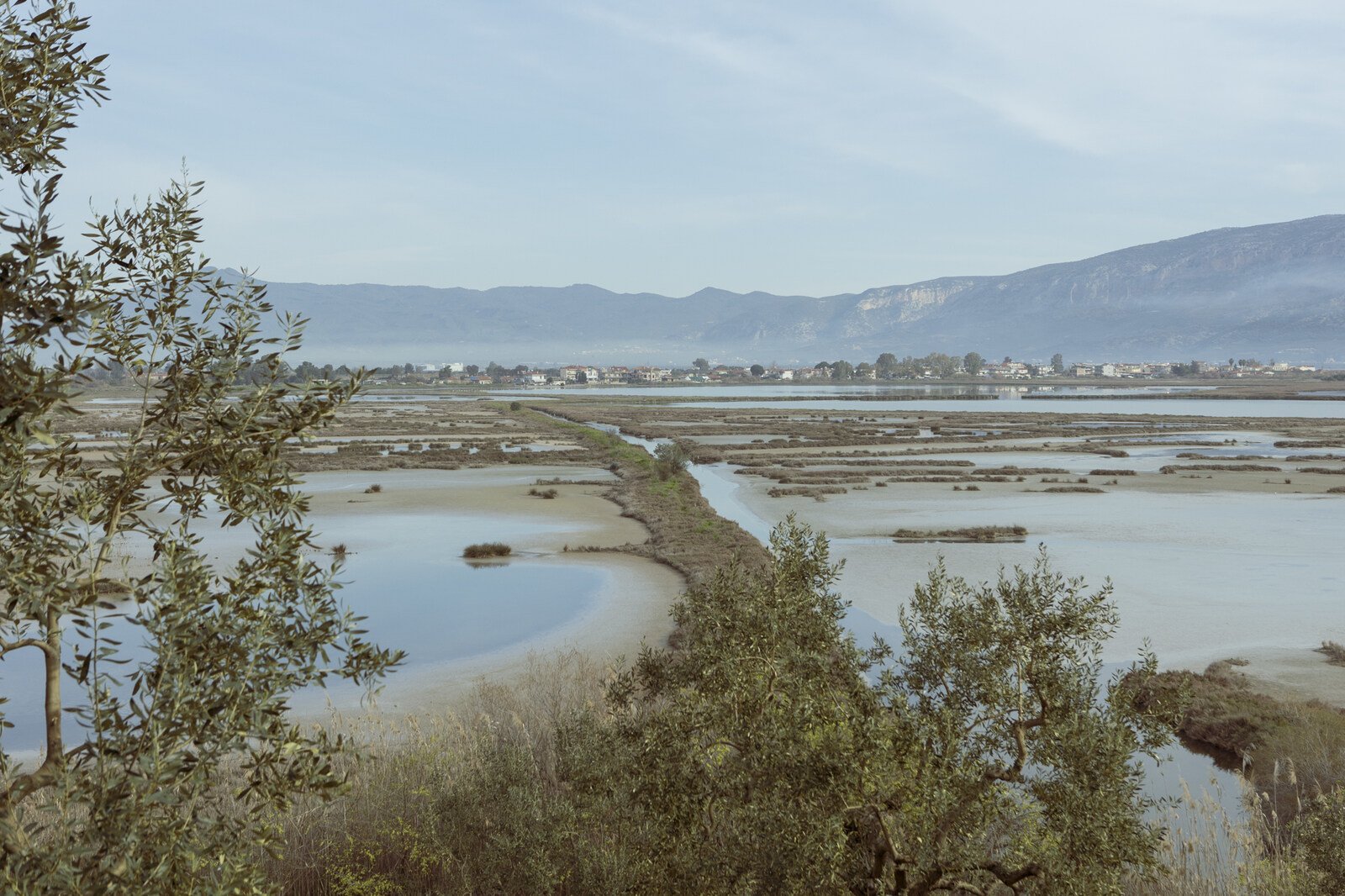Bogdan Balan
Vanishing Landscapes took place in the lagoon town of Aitoliko from March 6 – 9, 2025. It was a community event dedicated to activating a “periphery,” which aimed to bring art students to practice a bit in a different context, to bring visitors from Athens to enjoy themselves in a place less visited than others, and above all, to give a breath of life to the local community. Inspired by the work of the Aitoliko-born artist Vasso Katraki, the event was shaped by the atmosphere of her creations, but also drew on them to plant the seed of a more constant cultural life in the lagoon. The lagoon’s atmosphere is marked at all times and in all places by the diverse languages in which birds of all sizes and colors speak, among which, as a great delight for visitors, are flamingos.
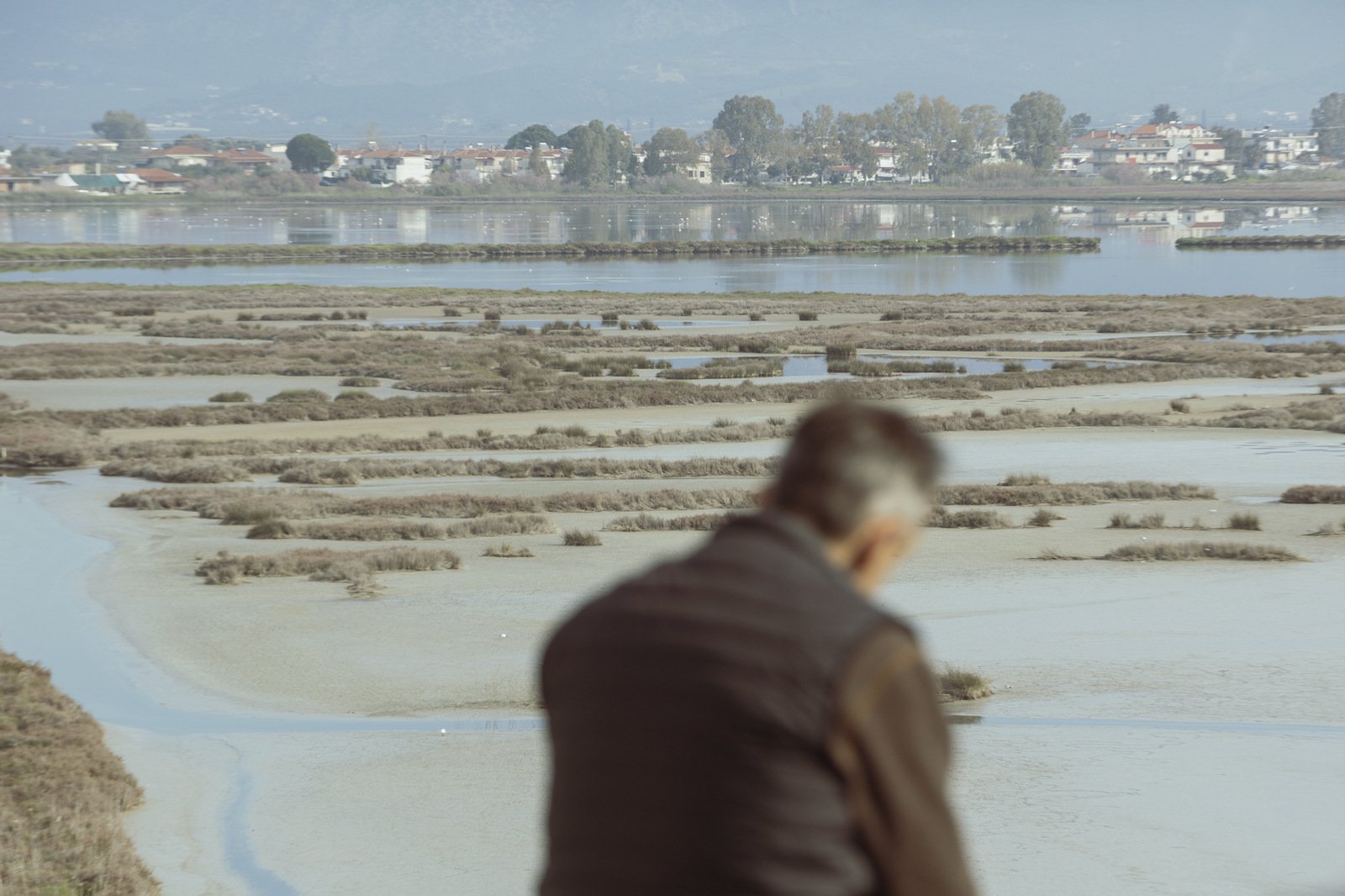
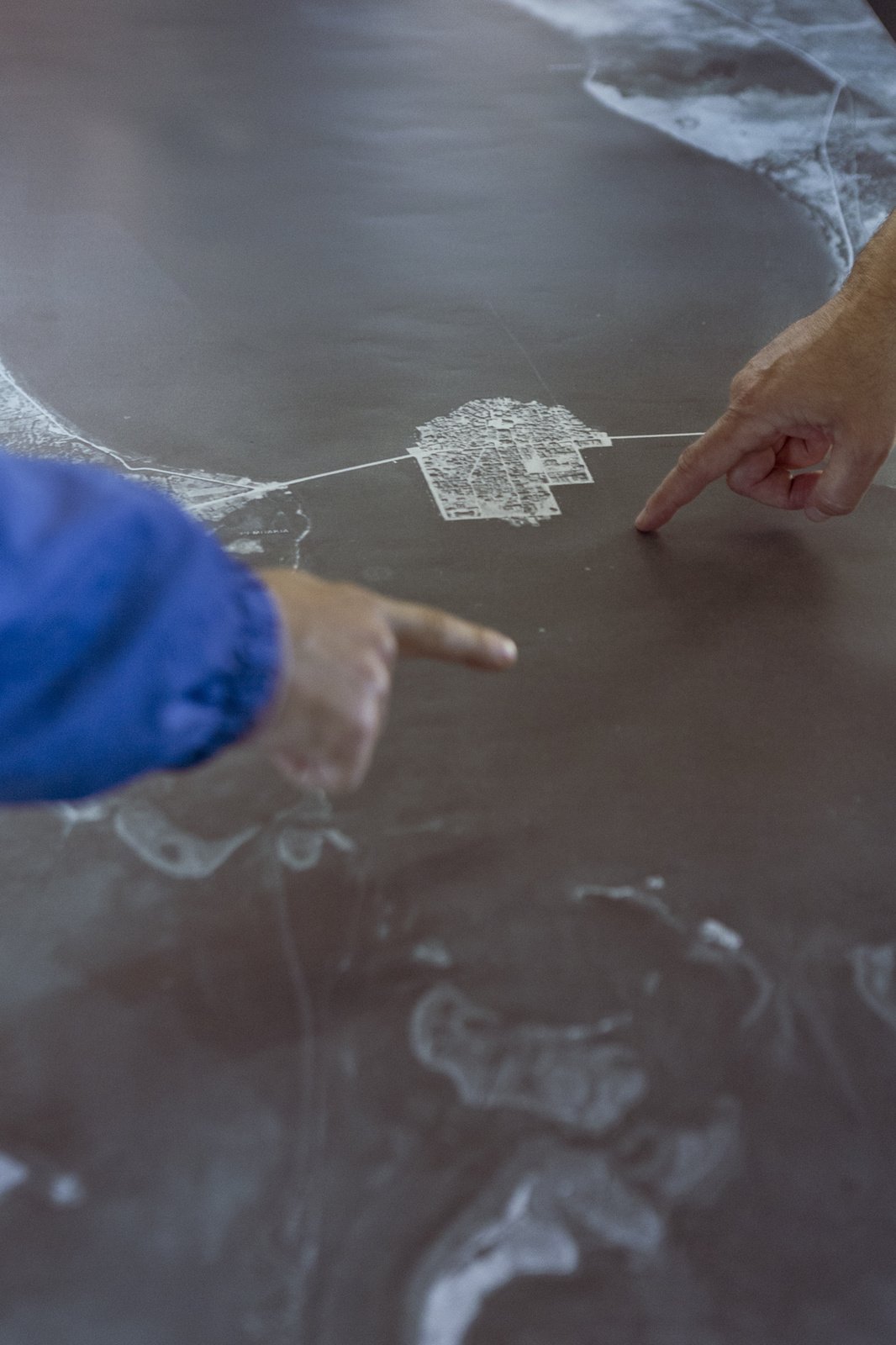
Vasso Katraki is distinguished by a style that, once mature, remains unified and dedicated to stone engravings with sober, sometimes dramatic figures. Her concern for the lagoon landscape stands out, as does her political commitment. She successively supported the Greek resistance during the Nazi invasion, the progressive camp during the Greek Civil War, and was persecuted and exiled to the island of Gyaros during the Colonels’ dictatorship. In her works, the attention is to the lives of ordinary people, political repression, anti-fascist and pro-democracy stances, and the pain of exile and imprisonment, and at one point even a reference to the Palestinian cause.
Aitoliko, once nicknamed “Little Venice” because of its network of canals and water-only access, is now a place where “the memory of the landscape disappears under layers of concrete and recent history,” according to one of the organizers, Eirini Fountedaki. According to research, it will be among the first places in Greece to disappear due to rising water levels. The project directly addresses issues such as water pollution from intensive agriculture and the death of lagoon ecosystems – local problems, but deeply relevant on a global scale. The house of Vasso Katraki, once right on the waterfront (during the military junta the canal was replaced by a road), illustrates these dramatic transformations. It is also the starting point for the project: her works, kept in the local museum, are deteriorating due to lack of funding and unstable management without the support of the Ministry of Culture. The museum of Katraki’s work is also not exactly the most accessible – it is not always open and has not been visited by many of the locals, despite having some facilities that can expand its operations.
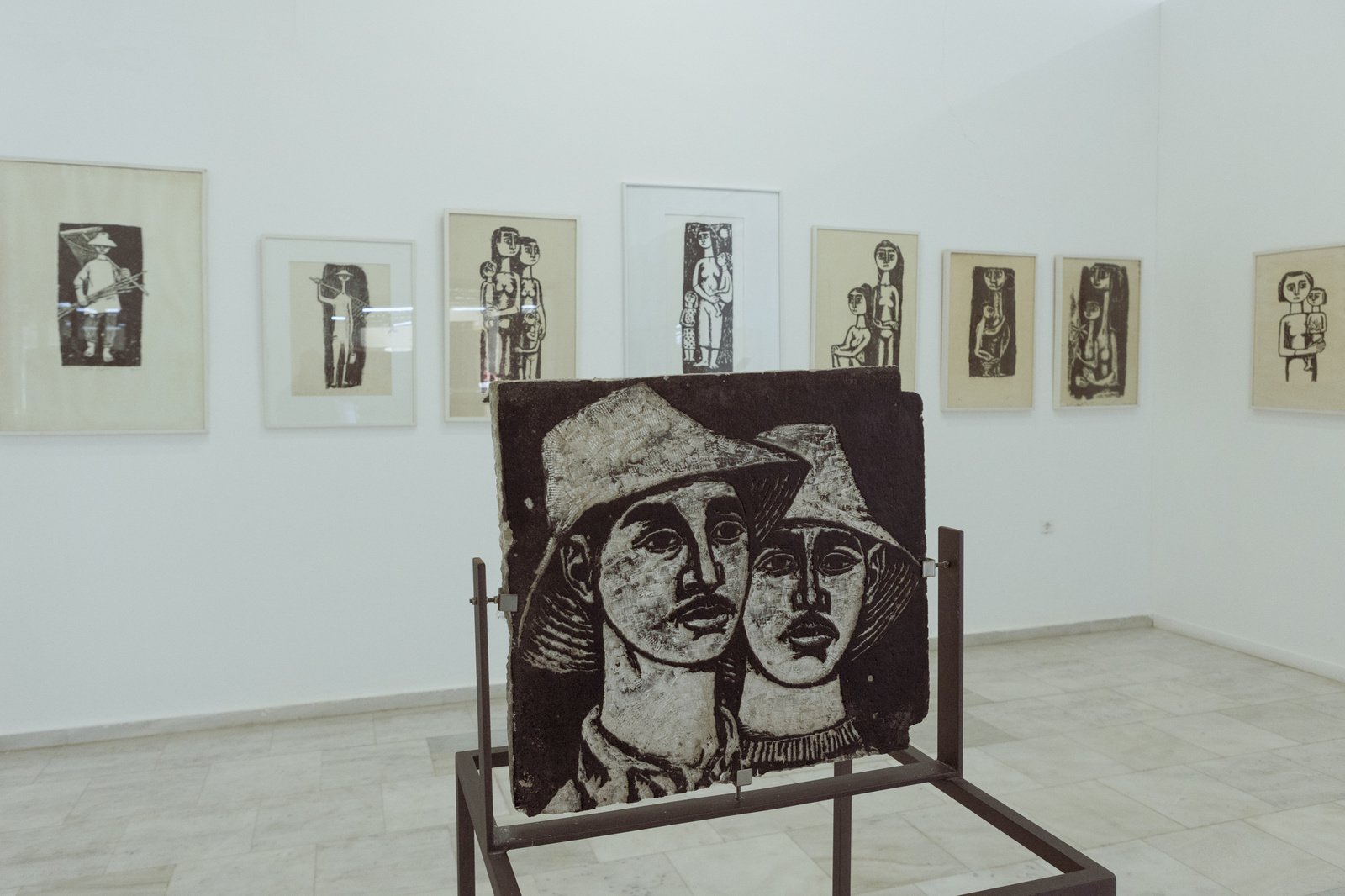
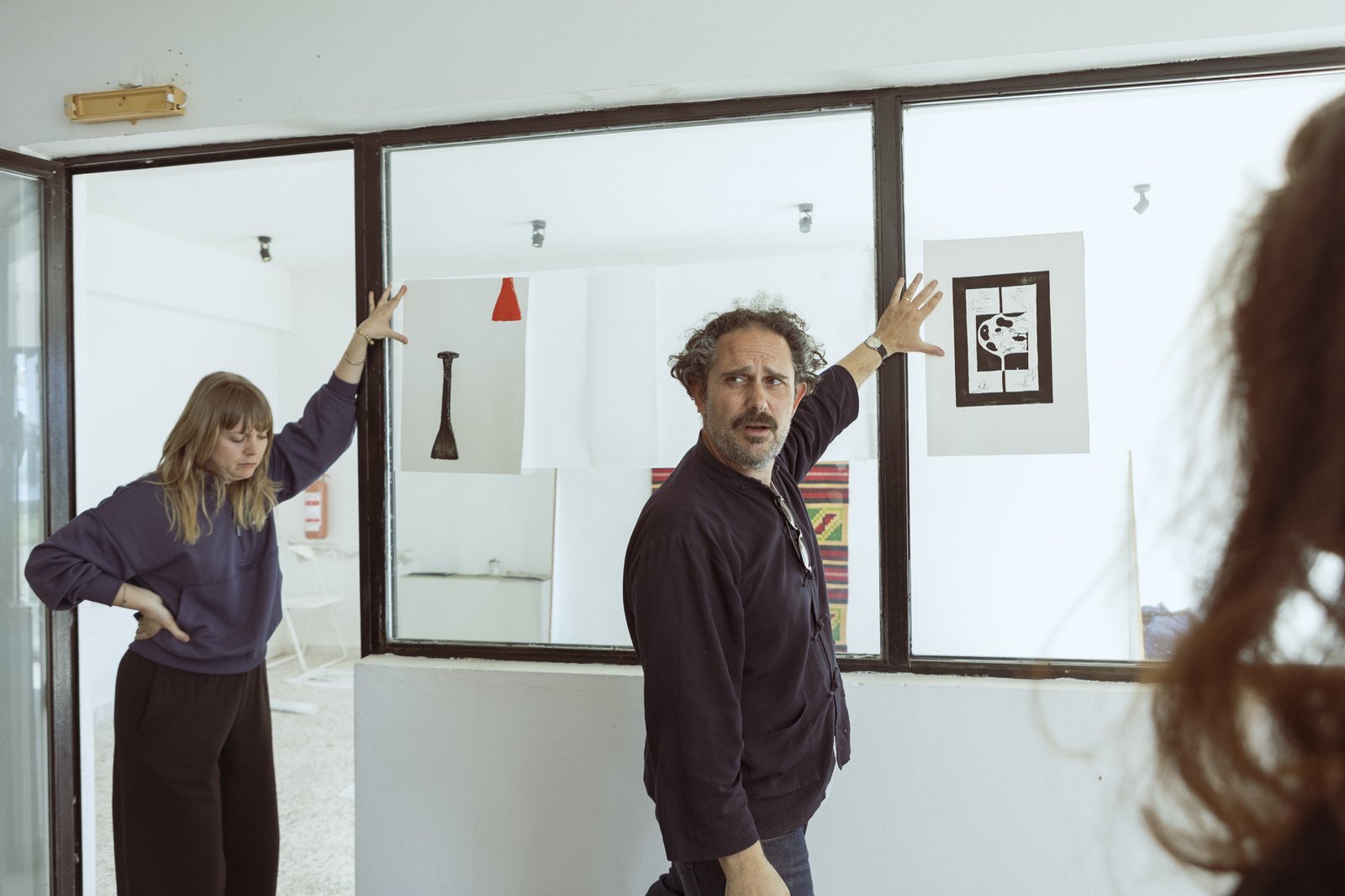
The cultural event held in Aitoliko starts from the idea of disappearance – not as a mere physical process, but as a form of temporal perception. The landscape of the lagoon has undergone major transformations over the centuries, marked by decisive human interventions: from the building of bridges in the 1840s to urban sprawl through the cementing of canals, and the replacement of water with infrastructure during the military junta. Organizers worked with locals – associations such as the women’s association that runs the ethnographic museum on the shore – and activated spaces with local historical value, such as an old tavern that survived the Kefalonia earthquake.
One part of the project in Aitoliko which was inspired by Katraki’s favorite medium, was a printmaking workshop with students from the Art Department of the University of Western Macedonia and Patras-based artist Iannis Papadopolous, held in one of the rooms of the museum. The workshop, called, People descended from trees and Deer, finished with a small opening and community lunch. The workshop was coordinated by an artist whose work also continues a work previously presented at the Thessaloniki Biennale in 2023. The starting point is the legacy of Vasso Katraki. The participants invited were students from a department with less visibility in a country where free extracurricular activities for art students are not so many. The students were introduced to printmaking; an interest of Papadopoulos not simply as a visual medium, but as a form of critical thinking and transmission of information. Inspired by both Papadopoulos and Katraki, the works took the form of maps, diagrams, or abstract representations of local phenomena: the flow of water, the artificial expansion of the city, the movement of eels. Engraving was thus used to map reality and recontextualize the printed message. The ecological dimension of the workshop would have sought to be coupled with a political one: Aitoliko as an ecosystem, not only in the natural sense, but also as a space of human, historical, and cultural relations. In doing so, Papadopoulos encouraged the students to use engraving as a way to reconsider our position as humans, in a historical moment in which the environment, gender, and social justice are simultaneously being discussed, all as facets of the same crisis of human positioning in the world.
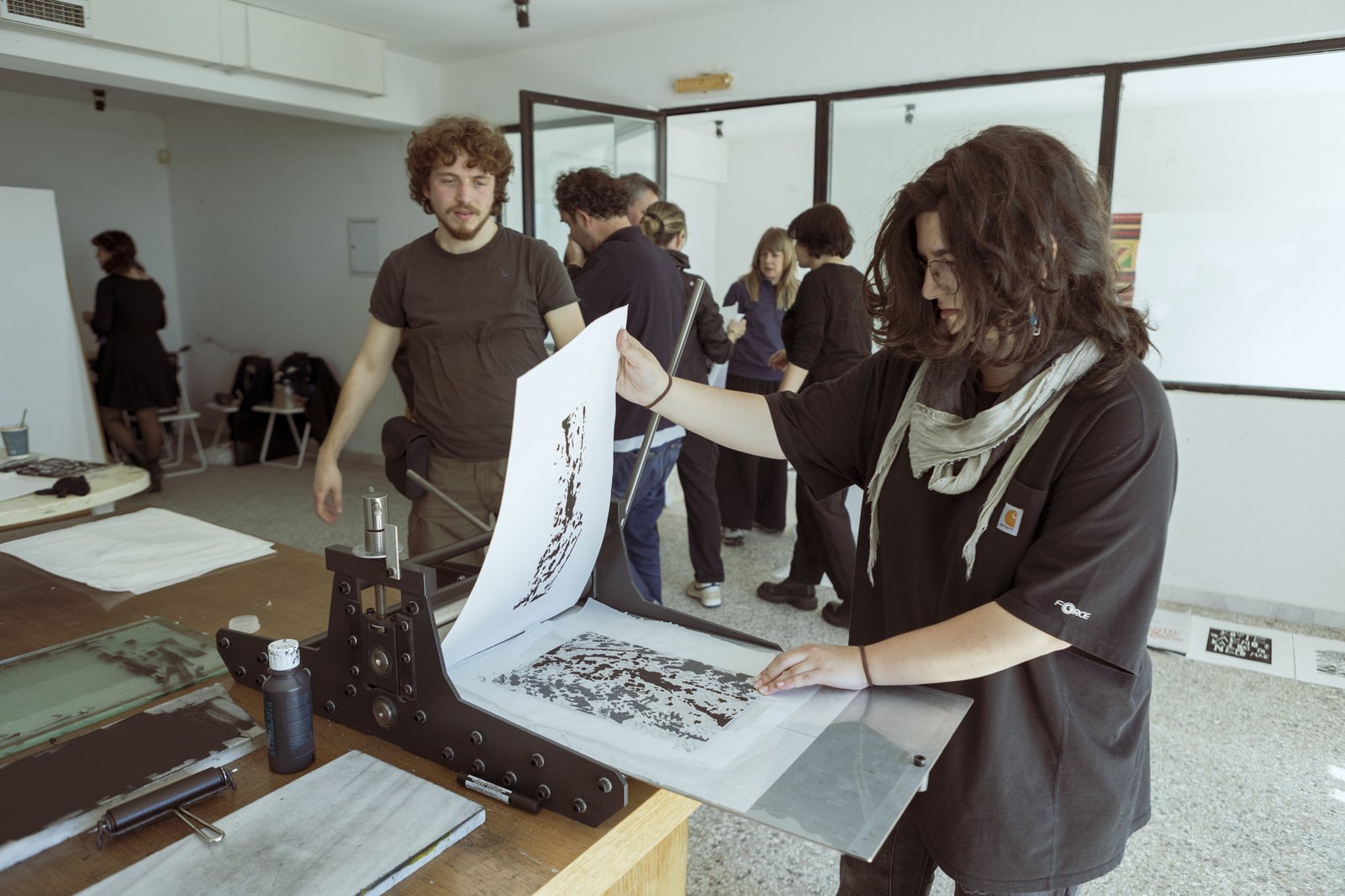
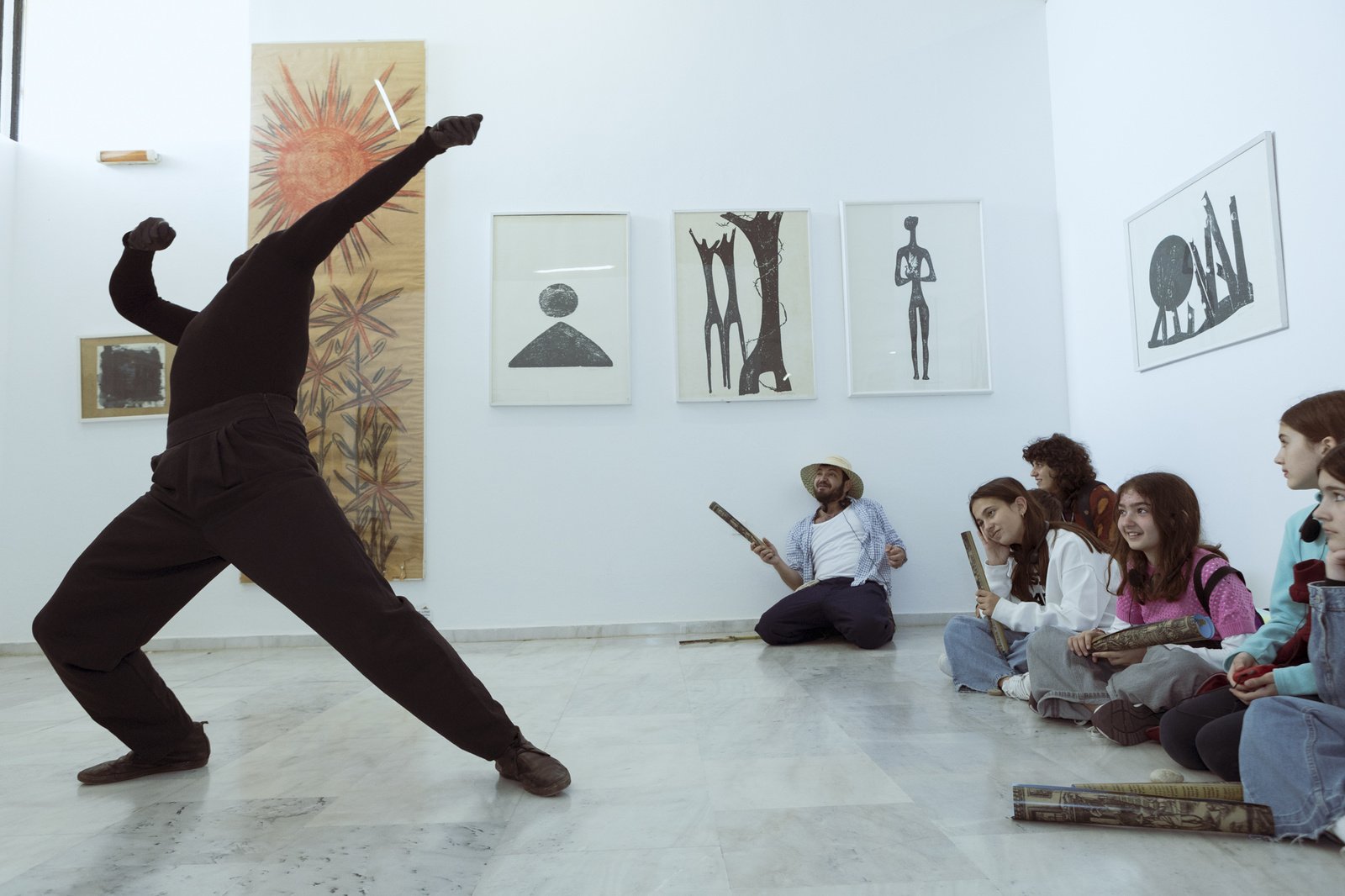
Being in a very special place, even by Greek standards, was fully appreciated by the students, as they told me when I interviewed them. Yet they would have liked to feel that they were operating more with the reality of Aitoliko, to be more in direct contact with the locals, and that perhaps they could even do something that would leave a stronger impression. “It’s strange that artists from different parts of Greece come to Aitoliko but none of them have a meaningful contact with the community in a way that they bring something to it. I was walking in the streets and talking to people. They were wondering what we were doing here,” says one of the participants. “They didn’t get it, and we were living in a fantasy with Vasso Katraki, who was a politically engaged artist,” they added. The students’ presence was also somewhat trivialized throughout the program by the fact that they were housed in the neighboring town, and depended on public transportation that came before the end of the day’s activities. They could not stay until the end of the screenings, nor the discussions afterward. A discreet, paternalistic separation was drawn in a way in which, in events like this, you usually don’t find. Here is a logistical problem that I assume had less to do with available funds than with careful time management (aka the discussion about “care” in contemporary art), a little clue that showed that even in a community-based project like this one, the “unholy ghost” of Greek classism has manifested itself into a context in which it shouldn’t be present at all.
In different locations more or less accessible to the average visitor to Aitoliko, every evening there was a screening of films curated by Cinema Fulgor, an initiative that started in a village in southern Portugal, which screens poetic films with political and environmental themes. The selection, named Cine-tides: Of wandering islands, misty lagoons, salt marshes and the solitude of the Earth defenders, and presented by Sílvia das Fadas, included both narrative films and experimental works, banking on the fact that every viewer, regardless of background, can find an emotional or aesthetic entry point. The most on-point of the screenings, when it comes to being about the place in which the event was held, was the evening dedicated to some of Rose Lowder’s films. A classic projector was used in a primary school classroom on the island to show films that expressed the reality that can also be observed in the actual surroundings: the lagoon, various birds, the salt extraction. They were different landscapes, but repeating common elements. One of the volunteers, artist Vangelis Savvas, was touched by the films, noting: “I found it interesting how similar situations appear in many places, not just in Greece, like in the films we watched. At first, I thought it was unique to this lagoon, with fishermen, plenty of birds, and salt extraction. But this danger of losing what you already have and its good is actually happening worldwide.”
For Nuno da Luz – the only professional contemporary artist whose work was not solely communicated in Greek – listening to the sounds around us with attention is about connection and presence, and working with sound allows people to rediscover things that are familiar, but which are typically ignored by sensory fatigue. For the Portuguese artist, if you listen to the environment, it will listen back. With the sound installation on display in the Katraki Museum, Nuno expresses his fascination with the rich avifauna of the lagoon area – a transit region and habitat for many bird species. The artist began by recording the bird species that frequently passed through the museum’s glassed-in lobby, recording both common birds (gulls, ducks, terns) and the ultrasonic sounds of bats feeding at dawn and in the evening. The installation uses recordings of frequencies well below the limits of human perception. da Luz has created a large sound installation, conceived as a long-lasting composition that does not repeat, and reflects the natural rhythms of an entire day. He mixed real-time recordings with slowed-down sounds so that the same sounds could be heard at different speeds (e.g. a bird song at 100% and at 25% speed) – an exploration of perception and how we understand sound. The installation was alive: a microphone outside the museum transmitted sounds in real time, which also ensured that each day brought a different sonic experience. da Luz explains that when he slows down the sounds of the bats, they become bird-like. Because bat and bird sounds coexist in the morning recordings, he slows them all down without being able to separate them completely. The installation covers a sonic range from 5 a.m. to 8 p.m., reflecting specific moments of bird and insect activity, including the “morning chorus,” which is the most intense acoustic moment.
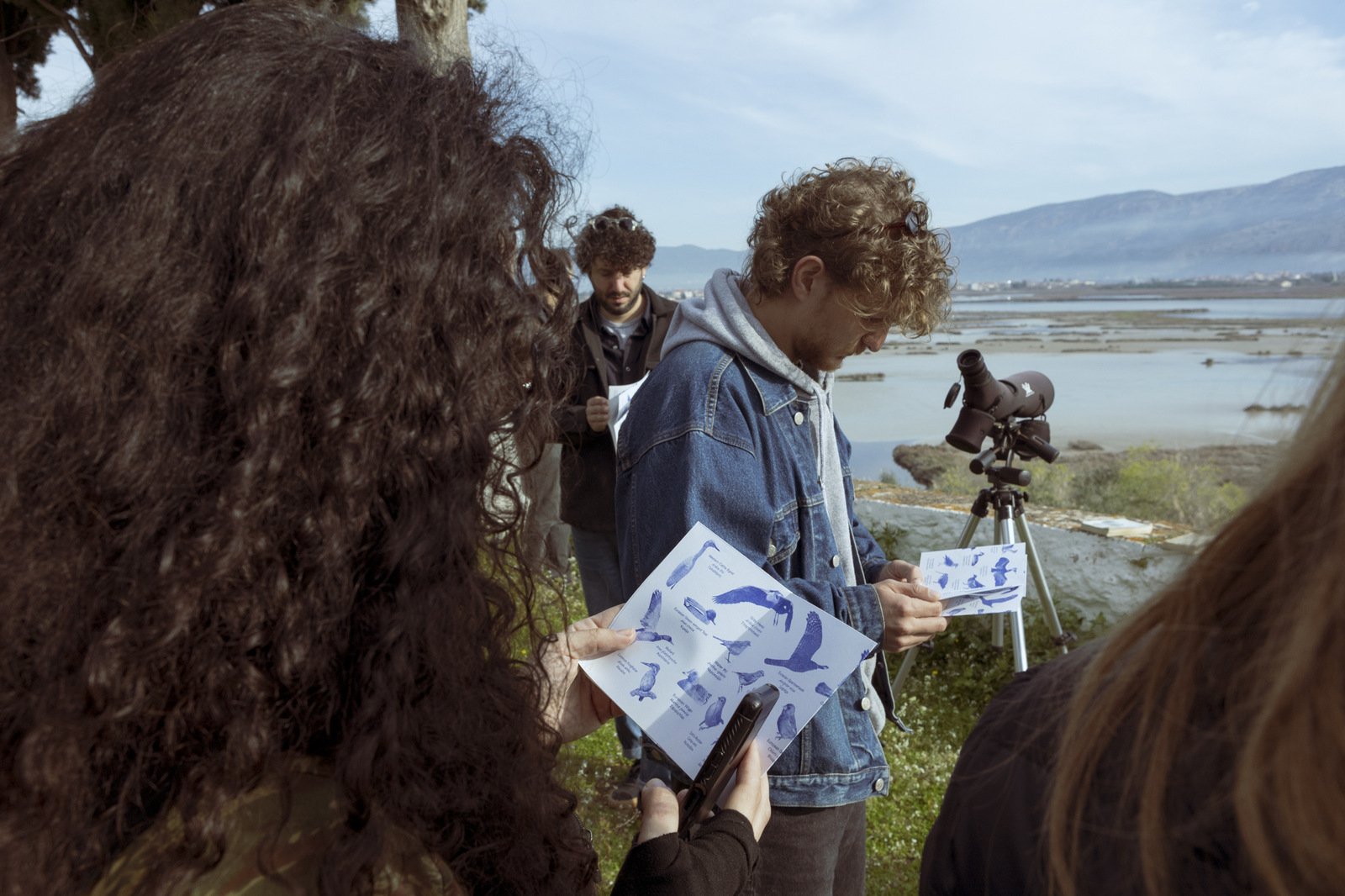

The highlight of the program was the performance Skylarking (Short Play), that da Luz conceived through the presence of local ornithologist Yanis Roussopoulos, on a hill above the lagoon. At first glance, the action was far from being the discovery of a vanishing landscape, but rather the discovery of a varied and diverse landscape that is slowly degrading and, however spectacular it may still be, is “not what it used to be”. Roussopoulos guided the audience in a form of “assisted listening,” explaining and imitating bird sounds. This form of human imitation of birdsong was, in the artist’s eyes, an attempt at sensory translation, similar to the way he slowed down bat sounds to make them perceptible to the human ear, and an exercise in acoustic empathy and learning a non-human communication. In this way, participants became “human” birds – not birds per se, but humans approximating avian communication. Imitating bird sounds is a reflection on the limits of human perception: we cannot understand everything birds communicate, but we can sense the structure of their sound through imitation and technology. Birdsong often has territorial marking roles. Sound is an ephemeral boundary, and birds seem to understand these fluid boundaries very well. Studies show that they react to the internal structure of sound – less to the order of the “words” than to frequency ranges and modulations. “This is similar to the way we transmit signals in radio – not through amplitude, but through frequency modulation,” the artist adds. In the performance we’re talking about, people’s imitation of bird vocalizations became a form of an improvised “choir.” The space reacted not only to the presence of the people, but also to their voices trying to approximate the birds. It was a unique, unrepeatable experience where people became part of the soundscape.
For da Luz, sound and noise are essential ways of understanding the world. It is not just about categorizing sounds, but about the quality of listening. We are listening to the echo of something bigger – a living, complex world in which sound can help us live better, and with more awareness.
Another high point was the ride on local fishermen’s boats. One of the student participants noted the enthusiasm of the boatmen for having the opportunity to be more in contact with the visitors, which she felt was something she had not experienced much of in the project. On the boat, I befriended some women from Patras who told me more about their experience. One of them, Elisa, said that she only found out about the event by chance, and that it was a pity because she didn’t see many people from the city there. She added that she would visit Aitoliko as a child with her parents on Sundays, but it had been a long time since she visited. She found great joy in participating in the activities. For a group of female visitors, Vasso Katraki is a name you only vaguely hear if you have a specialized interest in the visual arts, unlike many male Greek artists of the same period and caliber. Vanishing Landscapes was an opportunity for them to visit the museum, and to gain a contextualized understanding of the artist’s work. The opinion of the visitors was that the event should have been promoted more outside artistic circles and that it would fill a void, including for the inhabitants of their city Patras, which “has a cultural history but no cultural activity,” all the more so as art “in small towns is not connected to actual life, and art should be more charming for people who need it.” The conclusion of one of the women was, “Where is poverty, there is no art.”
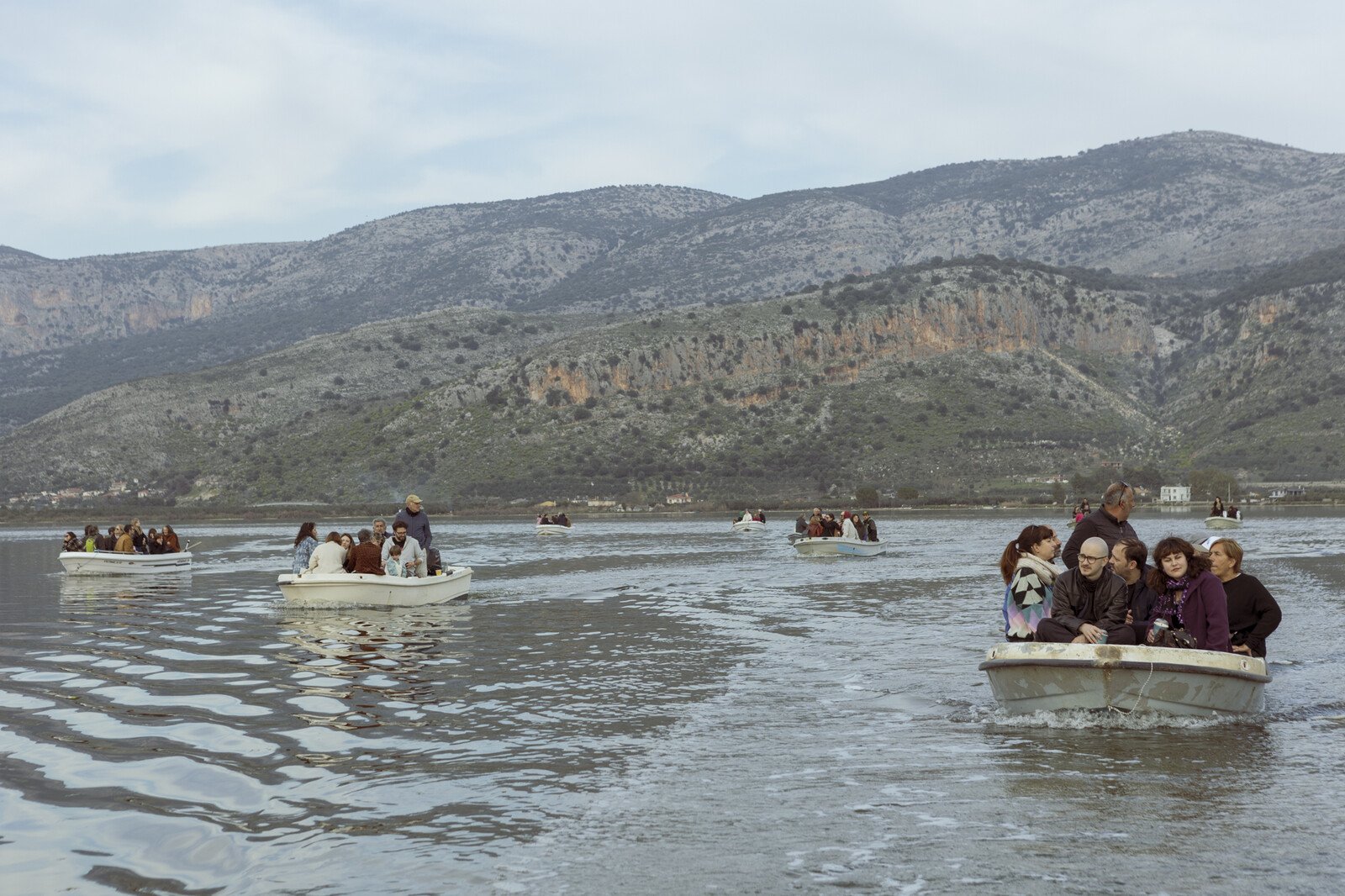
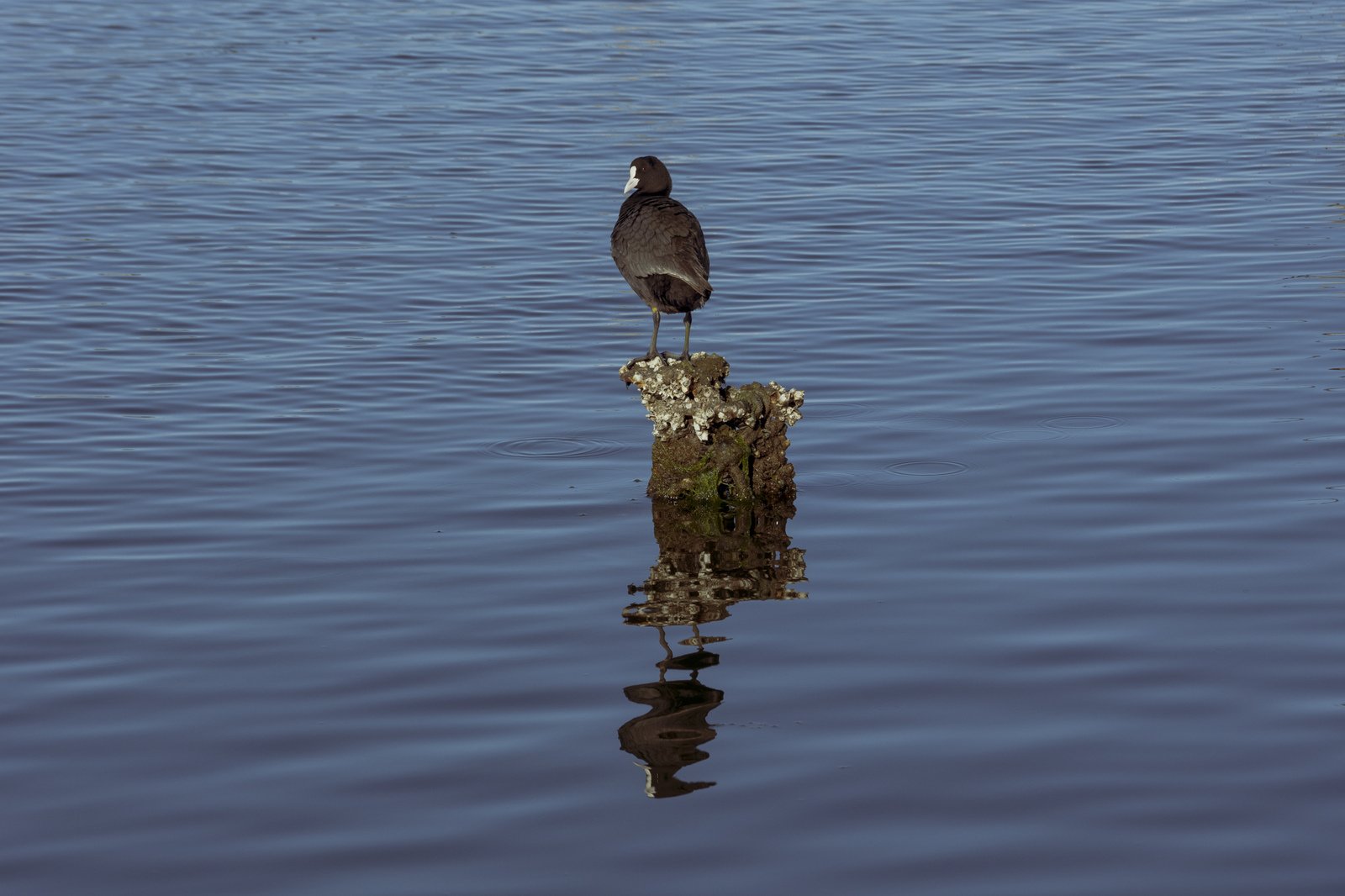
Artists: Nuno da Luz, Yiannis Papadopoulos, Campus Novel, Cinema Fulgor, Dulcinea Compania, hiboux ARCHITECTURE
Curated by: Maria-Thalia Carras, Eirini Fountedaki, Manto Psarelli, Foteini Salvaridi
Exhibition Title: Vanishing Landscapes
Venues: Centre of Engraving Arts – Vasso Katraki Museum and other locations in Aitoliko
Place (Country/Location): Aitoliko, Greece
Dates: 06.03 – 09.03.2025
Photos: Nefeli Papaioannou
